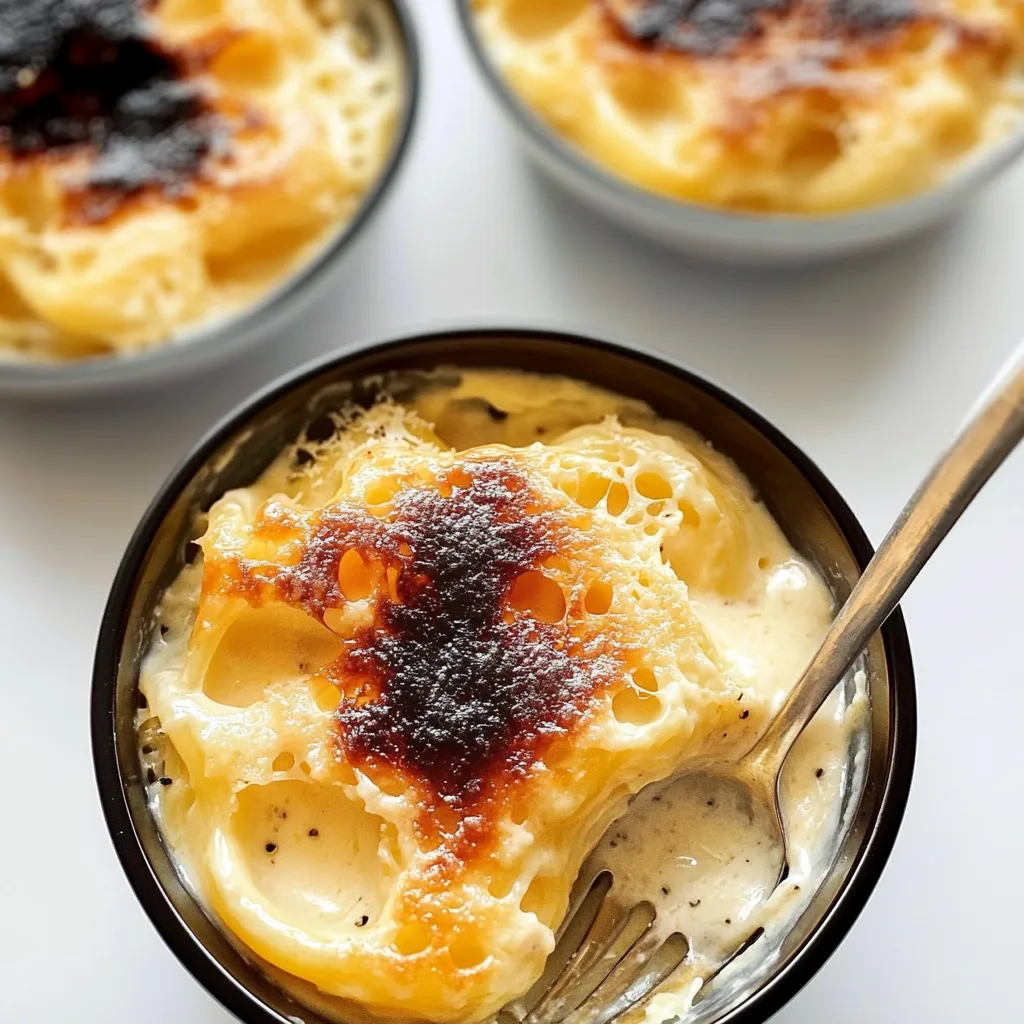Desserts hold a special place in the culinary world, and custard-based desserts have long been celebrated for their creamy textures and versatility. Among them, crème brûlée stands out as a symbol of indulgence, with its silky smooth custard base and signature caramelized sugar topping. But while crème brûlée is widely regarded as a luxurious dessert, it often raises questions about its relationship to the broader category of custard. So, what’s the difference between crème brûlée and custard?
crème brûlée and custard

Understanding the distinction between these two requires exploring their ingredients, preparation methods, and textures. Crème brûlée is a specific type of custard, but its unique caramelized crust and velvety richness set it apart from other custards like flan, pastry cream, or savory quiches. Custard, on the other hand, serves as a culinary foundation, appearing in countless variations across cultures and cuisines.
For instance, crème brûlée owes much of its global acclaim to its French roots, first documented in François Massialot’s 1691 cookbook, as highlighted in the article Origins of Crème Brûlée: French or Italian?. Custard, however, has a broader culinary legacy, spanning desserts like crema catalana in Spain and savory dishes like chawanmushi in Japan.
This article takes a deep dive into the differences between crème brûlée and custard, shedding light on their origins, culinary techniques, and practical applications. Whether you’re preparing a formal dinner or experimenting in the kitchen, understanding these distinctions will help you appreciate and master both desserts. Ready to explore? Let’s uncover the delicious details!crème brûlée and custard
What is Crème Brûlée?
Crème brûlée, translating to “burnt cream” in French, is a decadent dessert combining creamy custard with a crisp caramelized sugar crust. It is typically baked in individual ramekins and served chilled, with the caramelized top cracked just before eating.
Key Features of Crème Brûlée:
- Ingredients: Made with heavy cream, egg yolks, sugar, and vanilla.
- Signature Technique: The sugar topping is caramelized using a blowtorch or salamander, creating a golden, crackly surface.
- Texture: Rich, dense, and velvety, thanks to its heavy cream base and gentle cooking method.
Its presentation and contrast of textures make crème brûlée a staple of fine dining.
What is Custard?
Custard is a broader category of desserts made from a combination of milk (or cream), eggs, and sugar. Its versatility allows it to be baked, stirred, or steamed, and it can be either sweet or savory. Unlike crème brûlée, custard doesn’t typically feature a caramelized sugar topping.
Common Types of Custards:
- Baked Custards: Crème caramel, flan, and pot de crème.
- Stirred Custards: Pastry cream and custard sauce.
- Savory Custards: Quiche fillings and Japanese chawanmushi.
Custard is a foundational component in countless desserts and cuisines, offering limitless variations.crème brûlée and custard
Key Differences Between Crème Brûlée and Custard
1. Ingredients and Flavor
- Crème Brûlée:
- Heavy cream as the primary liquid, contributing to its luxurious texture.
- Flavor is typically limited to vanilla, though variations like coffee or lavender are common.
- High ratio of egg yolks, which makes the custard base denser.
- Custard:
- Made with milk, cream, or a combination of both.
- Offers a broader range of flavors, including chocolate, citrus, and spices.
- Can use whole eggs or yolks, depending on the desired texture.
2. Preparation Techniques
- Crème Brûlée:
- Baked in a water bath (bain-marie) to ensure even cooking and prevent curdling.
- Requires caramelization of the sugar topping just before serving.
- Custard:
- Can be baked (e.g., flan), stirred (e.g., pastry cream), or steamed (e.g., chawanmushi).
- Lacks a caramelized topping unless it’s crème caramel or flan.
For tips on mastering custard textures, check out these water bath techniques for custards.
3. Texture and Presentation
- Crème Brûlée:
- Rich, dense, and creamy due to the use of heavy cream.
- The caramelized sugar adds a crisp layer and visual appeal.
- Custard:
- Texture varies based on preparation, ranging from thick (pastry cream) to light and jiggly (flan).
- Presentation can be simple or complex, depending on the dish.

The Cultural Origins of Crème Brûlée and Custard
Crème Brûlée: A French Classic
Crème brûlée is often attributed to French cuisine, with its first known recipe appearing in François Massialot’s 1691 cookbook, Cuisinier Royal et Bourgeois. Over the centuries, it became a staple of fine dining, particularly during its resurgence in the 1980s.
For more on its historical roots, visit this detailed article on crème brûlée origins.
Custard’s Global Versatility
Custard has a broader cultural footprint, adapted into countless forms:
- Crema Catalana (Spain): Similar to crème brûlée but flavored with citrus and cinnamon.
- Flan (Latin America): A baked custard topped with caramel sauce.
- British Custards: Served as a sauce over puddings or as a base for trifles.
- Asian Custards: Includes Japanese steamed egg custards and Chinese egg tarts.
Custard’s adaptability demonstrates its importance in both sweet and savory dishes worldwide.crème brûlée and custard
Frequently Asked Questions (FAQs) : crème brûlée and custard
What’s the main difference between crème brûlée and custard?
Crème brûlée is a specific type of custard, but its defining feature is the caramelized sugar crust that adds a unique textural contrast. While custards can range from baked dishes like flan to stirred versions like pastry cream, crème brûlée stands out for its richness and presentation.
Is crème brûlée a type of custard?
Yes, crème brûlée is a type of baked custard made with a base of heavy cream, egg yolks, sugar, and vanilla. However, its caramelized sugar topping distinguishes it from other custards.
Can I use custard as a base for crème brûlée?
Absolutely! The custard used for crème brûlée is essentially a rich, vanilla-flavored custard made with heavy cream and egg yolks. The addition of a caramelized sugar topping is what transforms it into crème brûlée.crème brûlée and custard
How is the caramelized sugar crust created in crème brûlée?
The caramelized sugar topping in crème brûlée is achieved by sprinkling granulated sugar over the chilled custard and applying direct heat. This can be done using:
- Blowtorch: The most popular method, offering precision and control for a perfectly crisp crust.
- Broiler: Place the ramekins under a preheated broiler for a few minutes, watching closely to avoid burning.
- Traditional Iron: Historically, a red-hot iron was used to caramelize the sugar.
Is flan the same as crème brûlée?
No, flan and crème brûlée are different desserts, though both are custard-based:
- Flan: Topped with a liquid caramel sauce, flan is lighter in texture and usually made with a combination of milk and eggs.
- Crème Brûlée: Features a crispy caramelized sugar crust and uses heavy cream, making it richer and denser.
Why does crème brûlée need a water bath?
A water bath, or bain-marie, ensures that the custard cooks evenly and gently, preventing curdling or cracking. Without it, the high oven temperature could cause the eggs to overcook, resulting in a grainy texture instead of the desired creaminess.crème brûlée and custard
What makes crème brûlée’s texture unique?
Crème brûlée achieves its velvety texture through:
- Heavy Cream: The cream adds richness and density.
- Egg Yolks: The high ratio of yolks creates a smoother, silkier custard.
- Water Bath: Gentle, even heat prevents curdling and ensures the custard sets evenly.
Can custard be savory?
Yes, custard can be savory! While sweet custards dominate desserts, savory versions like quiche fillings or Japanese chawanmushi are also popular. Savory custards often include eggs, milk, and seasonings like salt, pepper, and herbs.crème brûlée and custard
What are the most common types of custard?
Custards can be classified into three main categories:
- Baked Custards: Flan, crème caramel, and pot de crème.
- Stirred Custards: Pastry cream, custard sauce, and crème anglaise.
- Steamed Custards: Savory versions like chawanmushi and sweet steamed puddings.
How does the choice of cream or milk affect custard?
The choice of liquid significantly impacts the texture and flavor of custard:
- Heavy Cream: Creates a rich, dense custard, as seen in crème brûlée.
- Milk: Results in a lighter custard, common in flan or pastry cream.
- Combination of Both: Balances richness and lightness, often used in quiches or crème caramel.
What are some modern twists on crème brûlée?
Crème brûlée is highly versatile, and chefs have adapted it with creative flavors, such as:
- Espresso Crème Brûlée: Infused with coffee for a bold flavor.
- Matcha Crème Brûlée: Uses green tea powder for an earthy, vibrant twist.
- Fruit Variations: Raspberry, orange, or passionfruit can be added to the custard base.
- Savory Crème Brûlée: Incorporates ingredients like goat cheese or truffle oil for a unique appetizer.
Can I prepare crème brûlée in advance?
Yes, crème brûlée is an excellent make-ahead dessert:
- Prepare the Custard: Bake the custard and let it cool completely. Cover with plastic wrap and refrigerate for up to 2 days.
- Caramelize Just Before Serving: Add the sugar topping and caramelize it just before serving to ensure the crust remains crisp.crème brûlée and custard
Why does my custard curdle or crack?
Custard can curdle or crack if overcooked or exposed to uneven heat. To avoid this:
- Use a water bath to provide gentle, even heat.
- Monitor the baking time closely, as overbaking can cause the eggs to curdle.
- Remove the custard from the oven when it jiggles slightly in the center—it will continue to set as it cools.
Why is crème brûlée so popular?
Crème brûlée’s popularity stems from its:
- Textural Contrast: The creamy custard paired with a crisp sugar crust creates a unique eating experience.
- Elegant Presentation: Its individual servings in ramekins make it a favorite for upscale dining.
- Versatility: The custard base can be flavored in countless ways, from classic vanilla to exotic spices.
Can custards be frozen?
While custards like pastry cream or custard sauce don’t freeze well due to their high egg content, baked custards like flan or crème brûlée can be frozen. If freezing crème brûlée, avoid caramelizing the sugar until after it has thawed.
These detailed FAQs aim to answer common questions and provide a deeper understanding of the nuances between crème brûlée and custard, helping you appreciate both desserts while perfecting your technique.
Conclusion: the difference between crème brûlée and custard
While crème brûlée and custard share a common foundation, their differences in preparation, ingredients, and presentation make each unique. Crème brûlée, with its rich custard and caramelized sugar crust, shines as an indulgent dessert for special occasions. Custard, on the other hand, offers unparalleled versatility, appearing in countless sweet and savory dishes.
Explore how custards can go beyond dessert by experimenting with savory adaptations like Savory Crab Brûlée. Whether you prefer the elegance of crème brûlée or the adaptability of custard, these timeless desserts offer endless opportunities for culinary creativity.
crème brûlée and custard


